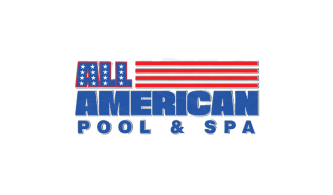Acquiring Pool Financing
After taking a look at the cost of building a new inground pool, you may be wonder how people pay for such a home improvement project. If you found the pool prices to be more than you think you can afford, let’s take a look a ways to finance the cost in an affordable monthly payment.
While a few homeowners will be able to save up for years to pay for the pool construction in cash, many homeowners will choose to finance their new pool. The choice to fund the pool through one of the many financing options available will allow for additional years of pool enjoyment.
Read on to learn a little more about some of the most popular pool financing options.
SECURED AND UNSECURED LOANS
Before discussing the pros and cons of the various financing options for your new inground pool, we need to explain the difference between secured and unsecured loans. A secured loan uses collateral to “secure” the loan in case of default. Most secured home improvement loans will use the home as collateral. Secured loans are the most popular loans for installing new pools because they will typically have lower interest rates.
An unsecured presents a higher risk to the lender because there is no collateral. Due to the increased risk for the lender, interest rates on unsecured loans tends to be higher when compared to secured loans. Except for some specific lenders, unsecured loans often have limits that are insufficient to cover the entire cost of a new custom pool
You may consider one of the following options to finance your inground pool:
1. HOME EQUITY LINE OF CREDIT
A home equity line of credit (HELOC) provides a specific credit limit similar to a credit card. The loan limit is determined by the amount of available equity in the home. The lender will use your home as collateral to secure the loan. The equity in the home will be determined through an appraisal by performing a market analysis and any current liens on the home from other loans. The loan can be paid off early or by paying the installment payments set by the loan terms. The one big advantage to a HELOC is the ability to take out the money as needed within the time frame established by the terms.
2. A HOME EQUITY LOAN
A home equity loan (HEL) is a one-time loan taken out against the home equity. The maximum loan amount is assessed in the same manner as a HELOC. Many lenders will HEL up to 90 percent of your home’s equity. . For homeowners looking for finances to complete one home improvement project, like a pool, a home equity loan may be the right great choice.
3. PERSONAL LOAN
Homeowners with good credit and insufficient equity may want to consider a personal loan. Personal loans can come as unsecured loans making it unnecessary to offer your home as collateral. The loan will be approved solely on your credit history. If you have excellent credit, you can often obtain ow fixed interest rates. Will those with fair credit can still obtain approval the interest rates may be higher. Sometimes you can get a lower rate by offering collateral if your credit history isn’t flawless.
4. CASH-OUT REFINANCING LOAN
Improvements to your home that will increase your home’s value, like a custom inground pool, a cash-out refinancing loan may be a good option. You can refinance your home and cash out the equity to pay for the improvements. This is a good option when you have sufficient equity, and you can refinance your mortgage at a lower interest rate.
5. 401(K) LOAN
A 401(k) loan is an option if you have an eligible 401(k) retirement fund. Many 401(k) plans will allow you to take out funds to pay for home improvement projects like building a new inground pool. While this may seem like the last alternative to other loan options, it’s not all that uncommon. In most cases, it will be considered a last resort. Before doing this type of loan, you should get professional financial advice. There could be unforeseen consequences to your retirement funds and tax ramifications with this type of loan.
POOL FINANCING RECOMMENDATIONS
We feel that our customers should seek out the best financing options that fit your individual situation. Our advice is to speak with several lenders to see which options are best for you and find the best programs and rates that fit your budget.




